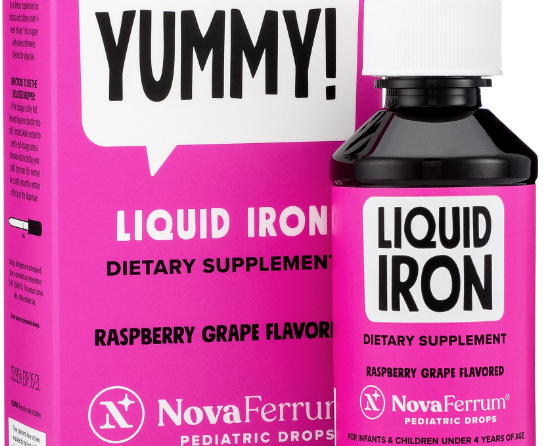
Anemia is a blood disorder that hampers the production of oxygen-carrying protein in the blood (hemoglobin). Hemoglobin performs a vital function in the body. It supplies oxygen to the heart, lungs, etc., and boosts the formation of RBCs (red blood cells). The deficiency of hemoglobin increases the risk of several diseases. It affects your overall well-being and makes you weak. The anemic people get tired very quickly and become victims of severe headaches & dizziness.
Although anemia does not differentiate based on gender and age, young women and small kids are at higher risk of this life-threatening disease. The women lose a considerable amount of blood during menstruation, delivery, and perimenopause. This abundant blood loss often makes them anemic. On the other hand, newborns and babies rely mainly on milk, which imparts their iron levels and causes anemia in them. It is the reason physicians prescribe Liquid iron pediatric drops for infants. The market is full of various flavored iron supplements for infants, such as orange, strawberry, chocolate, etc. You can choose any as per your babies taste
According to the stats around 20% of small kids suffer from anemia and the US. And for pregnant women, this percentage is 42%. There are many forms of anemia, however, the most iron-deficiency anemia is most popular. The low iron intake and poor absorption of iron lead to this type of anemia. Iron-deficiency anemia affects your metabolism and causes excessive fatigue. In such a condition, you need to elevate your iron reserve via consuming heme and non-heme sources of iron. Generally, iron-deficiency anemia is divided into three stages.
- Phase 1 Iron levels start depleting, but no symptoms appear.
- Phase 2 Iron starts decreasing rapidly along with low-performance levels.
- Phase 3 The red pigment of blood lightens, and the person becomes the victim of several health conditions.
Anemia is a serious matter and should be treated as soon as possible. You should give an iron-rich diet and liquid iron pediatric drops to your loved ones to prevent iron-deficiency anemia. People have a plethora of myths about anemia, which should be debunked right now. Here are the 4 common misconceptions about anemia and their truth.
- All Types Of Anemia Are Genetic
As mentioned above, there is a myriad of types of anemia. A genetic disorder is undoubtedly one of the major sources of anemia, but this does not mean that it is the only reason for being anemic. Sickle cell and Thalassemia are the two major types of hereditary anemia. The deficiency of vitamin B12, iron, and vitamin C also makes the person anemic. Apart from this, certain medicines and diseases (like HIV AIDS, Cancer, inflammatory, and Crohn’s disease ) inhibit the production of red blood cells, which results in anemia.
- Vegetarian People Are Anemic
Another common myth in people’s minds is that all vegetarians are anemic. Vegetarians indeed consume non-heme iron foods, which are quite harder to absorb. Studies have shown that vegetarian people are at higher risk of anemia than non-vegetarians. However, it’s absolutely false that all vegetarians are victims of anemia. The vegetarian people who take ample amounts of iron-rich diet and iron-supplements do not become anemic at all.
- Anemic Childrens Cannot Practice Sports
Anemic children and adults often feel dizzy and tired. But it doesn’t mean that they cannot practice sports. They can perform any exercise and are free to play all types of outdoor games.
- Poor Diet Is The Only Cause Of Anemia
Many of us think that anemia can develop only because of imbalance and poor nutrition diets. Besides this, they have a misconception that only a healthy diet and dietary supplements can help in treating anemia. Liquid iron pediatric drops indeed cure iron-deficiency anemia in babies, but other types of anemia ( such as aplastic anemia, hemolytic anemia, etc.) require different treatments and medications.
The Bottom Line -:
If you or any member of your family often experience dizziness, weakness, excessive fatigue, paleness, etc., it’s vital to visit the physician immediately to identify the root cause.












